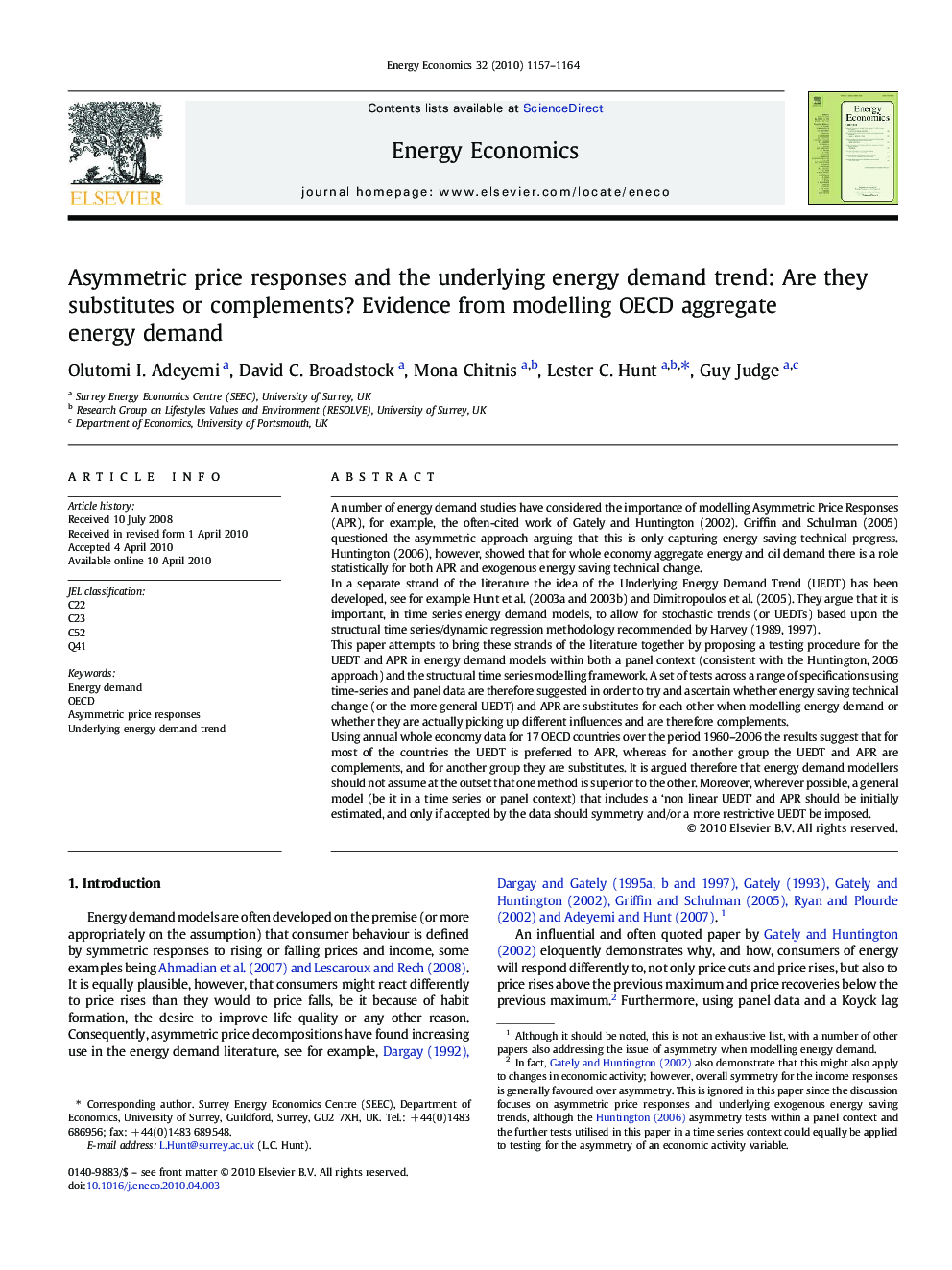| کد مقاله | کد نشریه | سال انتشار | مقاله انگلیسی | نسخه تمام متن |
|---|---|---|---|---|
| 5065497 | 1372318 | 2010 | 8 صفحه PDF | دانلود رایگان |

A number of energy demand studies have considered the importance of modelling Asymmetric Price Responses (APR), for example, the often-cited work of Gately and Huntington (2002). Griffin and Schulman (2005) questioned the asymmetric approach arguing that this is only capturing energy saving technical progress. Huntington (2006), however, showed that for whole economy aggregate energy and oil demand there is a role statistically for both APR and exogenous energy saving technical change.In a separate strand of the literature the idea of the Underlying Energy Demand Trend (UEDT) has been developed, see for example Hunt et al. (2003a and 2003b) and Dimitropoulos et al. (2005). They argue that it is important, in time series energy demand models, to allow for stochastic trends (or UEDTs) based upon the structural time series/dynamic regression methodology recommended by Harvey (1989, 1997).This paper attempts to bring these strands of the literature together by proposing a testing procedure for the UEDT and APR in energy demand models within both a panel context (consistent with the Huntington, 2006 approach) and the structural time series modelling framework. A set of tests across a range of specifications using time-series and panel data are therefore suggested in order to try and ascertain whether energy saving technical change (or the more general UEDT) and APR are substitutes for each other when modelling energy demand or whether they are actually picking up different influences and are therefore complements.Using annual whole economy data for 17 OECD countries over the period 1960-2006 the results suggest that for most of the countries the UEDT is preferred to APR, whereas for another group the UEDT and APR are complements, and for another group they are substitutes. It is argued therefore that energy demand modellers should not assume at the outset that one method is superior to the other. Moreover, wherever possible, a general model (be it in a time series or panel context) that includes a 'non linear UEDT' and APR should be initially estimated, and only if accepted by the data should symmetry and/or a more restrictive UEDT be imposed.
Journal: Energy Economics - Volume 32, Issue 5, September 2010, Pages 1157-1164